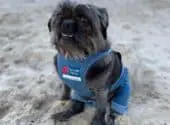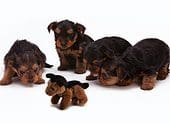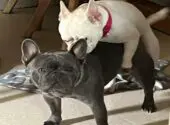Do you like dogs and cats? If so, you’ll love Pugapoos! These happy-go-lucky dogs always want to make new friends and are always up for a playdate with any feline around. Despite their small size, these dogs have more than enough love to give.
But, spoiler alert, Pugapoos can be barking masters if they take after the Poodle parent, so you’ll want to make sure you teach these dogs how to stop barking when you need them to.
In this article, we’ll show you how to stop Pugapoos from barking on command as well as how to care for these dogs.
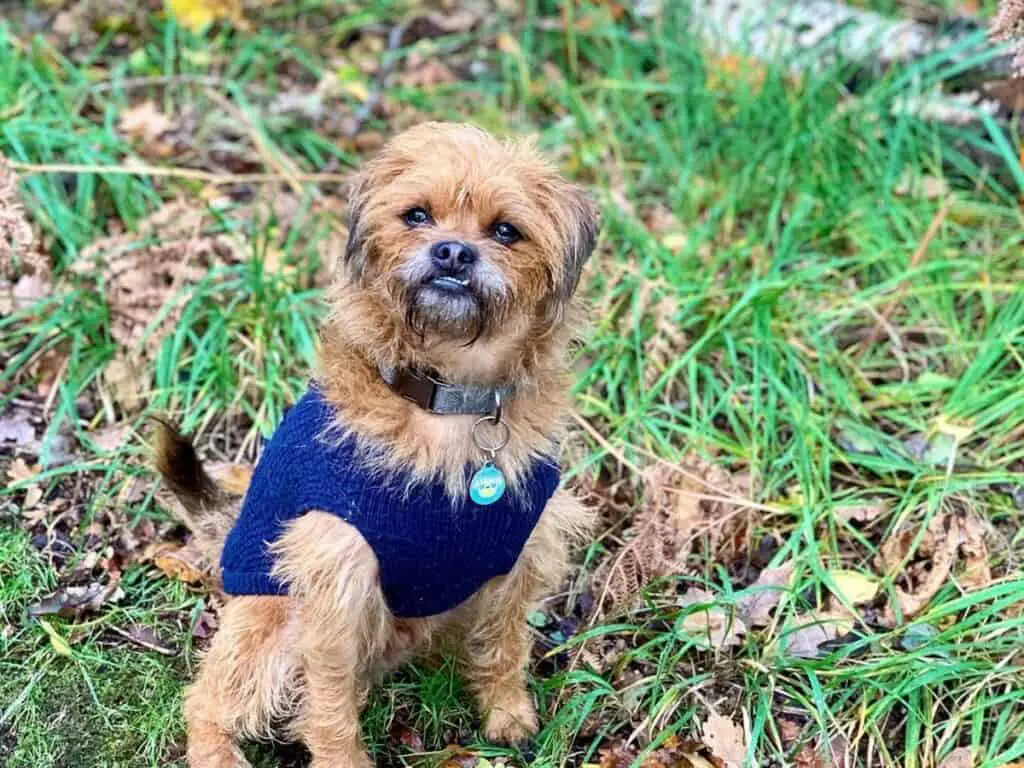
Quick Facts: Pugapoo
Height
8 - 15 inchesWeight
10 - 25 poundsLifespan
12 - 14 yearsBreed Size
small (0-25 lbs.)Breed Type
mixedBreed Group
companionTemperament
anxious, friendly, gentle, outgoing, playful, loyal, intelligentGood With
families, other dogs, catsIntelligence
highShedding
infrequentExercise Needs
moderateBarking Level
highEnergy level
highDrool Amount
lowCoat Type
straight and curlyCoat Patterns
bi-colorColors
black, cream, gray, white, brown, goldOther Characteristics
apartment-friendly, easy to groom, easy to train, good for first-time pet owners, high potential for weight gain, hypoallergenic, prone to health issues, strong loyalty tendenciesPugapoo Highlights
- These dogs are known for their low to moderate activity levels, which makes them perfect for people who want an active pet but don’t want to spend their days chasing after their dog.
- They’re low maintenance, meaning you won’t need to spend lots of time training them or fussing over them.
- These adorable pups love playing with their owners and living indoors, like most other companion dogs.
- If you have a Pugapoo dog that takes after the Pug parent, be prepared for them to snore and snort.
- Pugapoo dogs can have straight or curly fur. They are also considered hypoallergenic dogs.
History
Generations of families have fallen in love with this breed, but its exact origin remains shrouded in mystery. To give us an idea of the breed’s roots, let’s look at the history of each parent breed.
Australian Shepherd
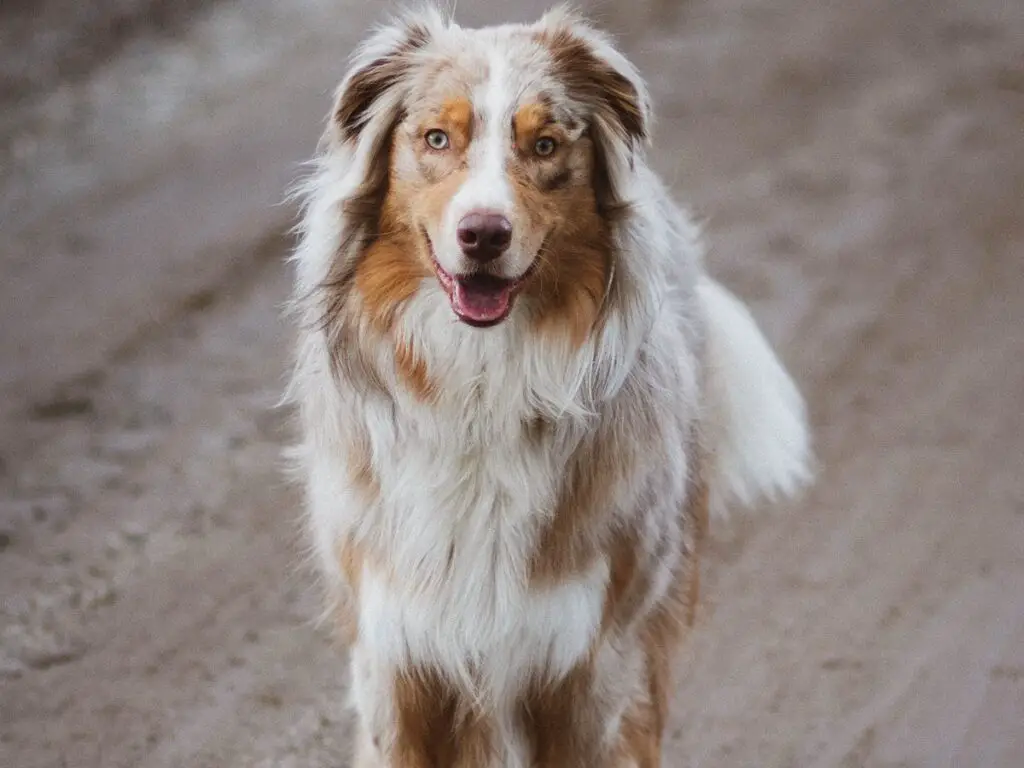
The origin of the Anatolian Shepherd Dog appears to date back to hunting dogs from Mesopotamia, suggesting a very ancient breed. Through the ages, they have been adapted to best suit their environment and responsibilities; this process was heavily impacted by factors such as duties, climate, and lifestyle.
This breed can be found in its homeland in Turkey, where it has traditionally served as a herder’s friend and guardian for livestock; it was selectively bred to share qualities with the farm animals so that potential threats would not be able to differentiate these shepherd dogs from their prey.
During the 1970s, breeders in Western countries began to exhibit increased interest in Anatolian Shepherds. They subsequently ignited a process by which landrace natural breeds could steadily be transformed into modern variants; this was achieved through various means, such as documenting origins from particular ancestors and forming breed standards that set forth requirements.
The first kennel likely arrived in America during the late 1930s, when they became part of a study that was intended to find what type of dog would make an exemplary sheepdog.
Great Pyrenees
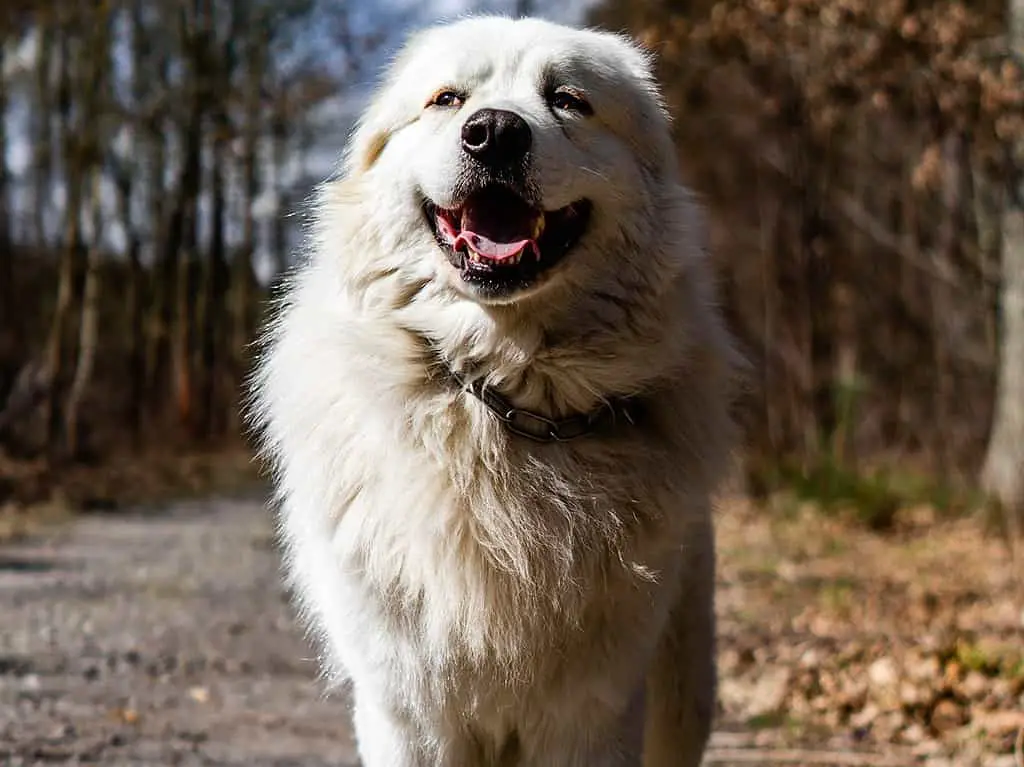
It is believed that the Great Pyrenees descended from a collection of predominantly white mountain flock guard canines dating back to around 10,000 or 11,000 years ago in Turkey. This theory is further supported by the likelihood that these large white dogs were brought to the Pyrenees Mountains with their herdsmen and domestic animals dating as far back as 3000 BC.
In 1931, Mr. and Mrs. Crane imported a number of Great Pyrenees in an effort to establish the breed in North America with the formation of Basquaerie Kennels at Needham, Massachusetts; their dedication to the cause enabled the breed to remain robust and continue developing. They also acquired valuable breeding stock from Europe prior to World War II restricting access from the continent.
On February 1935, the American Kennel Club approved the official standard of the Great Pyrenees, more commonly called Pyrs. Described by its characteristics as a kind, intelligent and regal breed of immense size, Pyrs can be a strong addition to any home.
Appearance
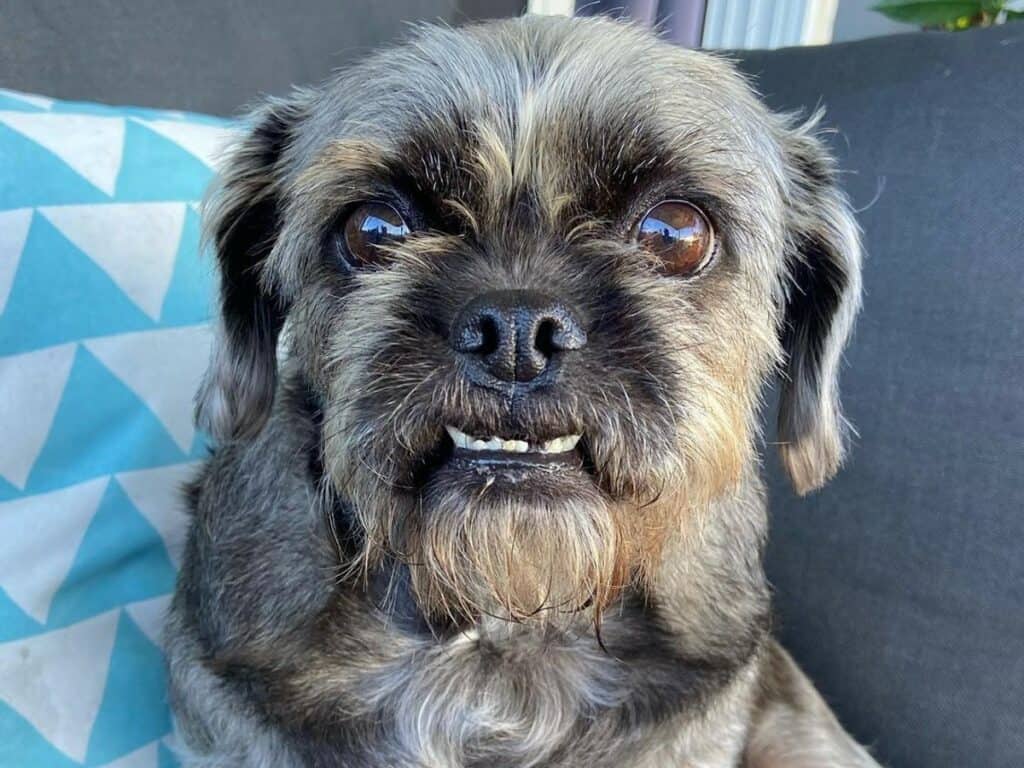
The Pugapoo has a nose typically pushed down into a shortened flat face — making it one of this adorable breed’s most striking physical characteristics. They also have a strong, compact build and a puffy tail that stands out.
Pugapoo Size
Between 10 and 13 pounds are the most common weight, but they’re all so adorable no matter what size they are. The average height is 8 to 15 inches.
Pugapoo Colors
Pugapoos boast a wide variety of beautiful colors — white, gray, gold, brown, cream, black, and every combination in between. Because of the Poodle influence, these dogs are hypoallergenic, making them the best companion for people with allergies.
Read also: When Do Puppies’ Eyes Change Color?
Coat
They come in two different coat types: straight or curly. Plus, they don’t shed a lot, so you never have to worry about hair all over the house.
Personality
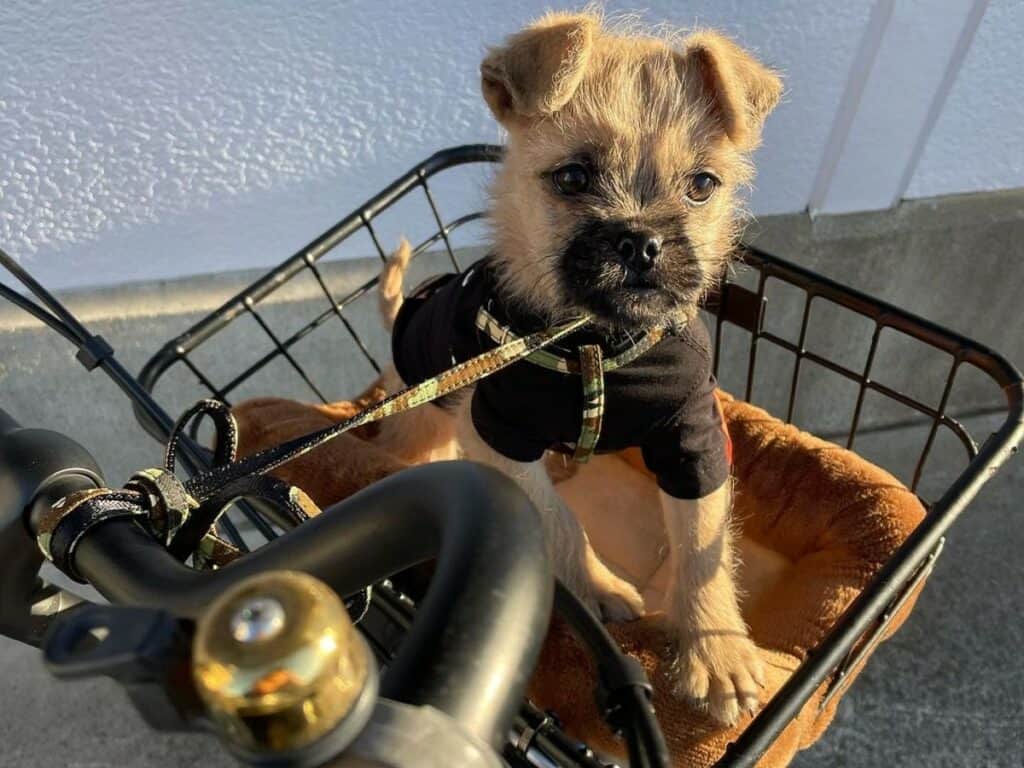

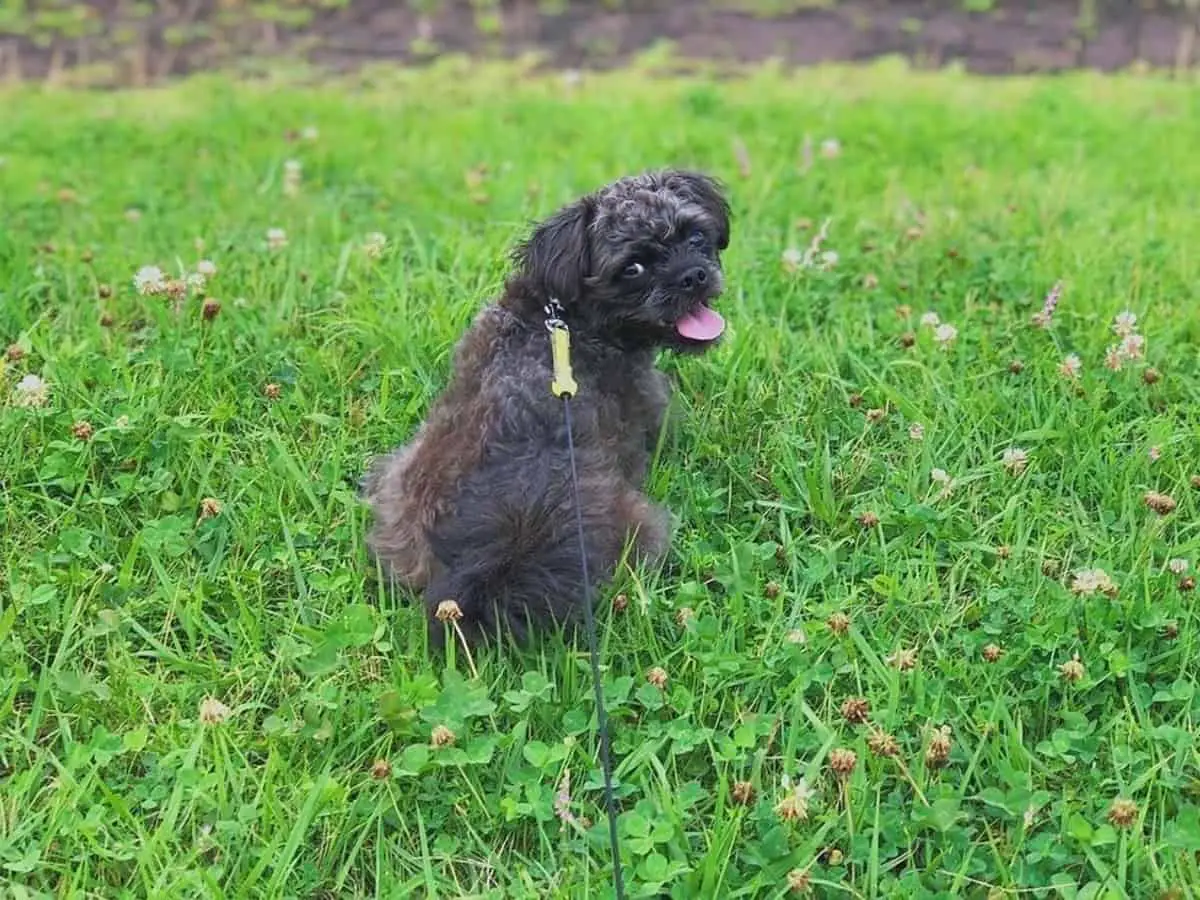
Because both parent breeds love people, Pugapoos make great family pets! They are always happy and friendly, making them perfect for families with children. But this breed has other adorable qualities that will make everyone smile.
Have low to moderate activity levels: These dogs have low to moderate activity levels, making them perfect companions for people who want an active pet but don’t want one that’s constantly running around.
Prone to barking: They’re usually docile and friendly, but if they take after their Poodle side, they can be big barkers. This can be a problem for those living in apartments or homes with thin walls and for anyone who wants to keep their peace and privacy.
There are a few reasons why dogs might bark uncontrollably. Some dogs may bark because they’re scared. Others may do it as a form of communication. Still, others may just be trying to get your attention.
If you’re concerned about the noise your dog makes, then there are a number of things you can do to try and reduce the noise. First, make sure you give your dog plenty of attention and playtime — this will keep them occupied and reduce the likelihood that they’ll bark out of boredom or anxiety. You can also try training your dog to stop barking –— this can be a difficult process, but with patience and consistency, it can be successful.
Calm and gentle: These dogs are generally calm and gentle, but they may also want to roughhouse with you at times. This is their way of showing affection and is essential for their social development. Additionally, roughhousing is one of the best ways to bond with your dog.
But did you know that roughhousing can sometimes lead to Pugapoos biting, barking and swiping? You need to be sure to teach your furry friend what behaviors are okay, so they don’t get out of control.
Loyal: Pugapoo dogs are loyal companions. They will always be there for you, no matter what. If you’re ever feeling down, these dogs are ready to cuddle with you and lift up your spirits.
Intelligent: Pugapoos are intelligent dogs. Since an intelligent dog can understand complex commands, training is much easier than with a dog who is not as intelligent. You’ll be able to train your Pugapoo to do whatever you want in a fraction of the time it would take with a less intelligent breed.
Pugapoo dogs should be trained from as early as 16 weeks old with things like socialization and positive reinforcement techniques that incorporate praise and treat rewards. They always want to please their owner and make excellent subjects for training.
They’re also able to sense things that other dogs might not be able to, like when a stranger is approaching your home. This makes them a valuable asset if you live in a dangerous or crime-ridden area.
And it gets better; an intelligent Pugapoo dog is less likely to get into mischief since they’re more likely to understand what you’re asking them to do. This means that you’ll be able to keep your home clean and organized without having to scold your pup constantly.
But be careful what you wish for. A smart Pugapoo can be fun to have around, but there is also a drawback. This breed is known for its amazing skills and abilities, but they need plenty of stimulation to stay happy and healthy.
Mental stimulation means getting your dog to learn new obedience commands and tricks and doing something fun. Failure to provide this stimulation will result in an unhappy, destructive, and ultimately anxious dog.
Health
The Pug and Poodle parent breeds have known genetic health conditions. Does this mean that the resulting offspring could develop these conditions.? The answer is yes. These health conditions can be passed on to the Pugapoo pups.
Short-Faced (Brachycephalic) Dog Syndrome: The Pugapoo’s big draw is its adorable flat face, but don’t forget about the drawbacks of the short-faced dog syndrome. Besides breathing difficulties and other respiratory health issues, your dog might also be prone to exhaustion issues and a low tolerance for hot temperatures.
Hypoglycemia: Do you know what hypoglycemia is? It’s a condition in dogs that is caused by low blood sugar. When blood sugar levels are low, cells in the pancreas release glucagon, which can cause a number of unpleasant symptoms, such as shivering, muscle twitching, and seizures.
If you’re a Pugapoo owner, it’s important to take steps to prevent this condition.
Make sure your Pugapoo’s food is high in fiber and low in sugar. This will help keep his blood sugar stable. Also, monitor your Pugapoo’s blood sugar levels regularly. If your Pugapoo is having problems with blood sugar, you need to be able to track it closely so you can take action if necessary.
And don’t forget to exercise your Pugapoo regularly. Exercise is important for your dog’s overall health and can help keep his blood sugar levels stable.
Pug Dog Encephalitis (PDE): Pugapoos are prone to PDE, a serious neurological disease that can affect your dog’s brain. Symptoms of PDE include seizures, lethargy, and coma. If you notice any of these signs in your Pugapoo, get him to the veterinarian as soon as possible.
There is no cure for PDE, but treating the symptoms can help your dog survive.
Obesity: This is a problem because obesity can lead to serious health problems such as diabetes, heart disease, and stroke. Obesity can also cause serious breathing difficulties.
There are ways to prevent Pugapoos from becoming obese. One way is to feed them a healthy diet. Pugapoos should be fed a diet that is high in fiber and low in calories.
Cataract: Cataracts are a form of blindness. They are caused by the gradual accumulation of a thick film of crystallized lens material in the eye. This film blocks light from passing through the eye and can eventually lead to blindness.
You can help protect your Pugapoo’s vision by regularly checking their eye health. Make sure to visit your veterinarian if you notice any signs of cataracts in your Pugapoo.
Lifespan
These adorable dogs can live up to 12 to 15 years, providing you with years of loyal companionship.
Care
The Pugapoo won’t need massive activities on a daily basis, which will save you lots of time and energy. They enjoy indoor play, so take advantage of this by reserving small doses of outdoor play once or twice a week instead. But be sure to walk your dog for an hour every morning and afternoon.
Note: Trim her nails every two weeks, and make sure to brush her teeth regularly with a toothpaste recommended by your vet. Make sure also to use a vet-approved cleaning solution to ensure that the Pugapoo’s ears are clean and infection-free.
Diet
Pugapoo puppies need a healthy diet that is specifically made for their size and body type. Talk to your vet before making any decisions about dog food — it’s important to get the most accurate information possible.
And remember: Keep your Pugapoo under control when it comes to their diet, as overfeeding can lead to obesity and ultimately diabetes!
Read also: 12 Worst Dog Food Brands To Avoid This Year
Grooming
Brushing and bathing them every week is really important. If they get too long hair, they may become dirty, and it will be difficult to keep their fur clean.
Pugapoo’s coat type determines the level of grooming that is necessary. Though the straight coats of this dog don’t shed minimally, you still need to groom your Pugapoo every 4-6 weeks. Grooming your dog’s coat yourself is definitely doable — once you know the basicS. Not only will it keep your dog looking good, but you’ll also get to bond with them in the process.
Likewise, clip the Pugapoo’s curly coat to keep the fleece from getting knotty and matted. This could prevent any skin infections from forming.
Pugapoo Puppies
Which Pugapoo puppy will you be getting?
Pugapoos are such a unique breed. Not only can they vary greatly in appearance from one pup to the next, but each individual pup can look strikingly different from its parents, too. Their health risks, activity level, personality, coat type, color, and size will all vary depending on the dominant trait they inherit from their parents.
Starting these pups off with training and socialization at an early age is essential for their development into obedient and well-behaved companions.
Children and Other Pets
Pugapoos are awesome dogs. They are the cutest animals on earth and are also known to be great with kids. They typically have a gentle temperament and are usually affectionate, which makes them perfect for families with children.
They also get along well with other animals. They are especially great with cats, who can often get along quite well. This makes Pugapoo dogs a great choice for families with cats, as they will be able to get along well together and share the love and attention of each other.
Rescue Groups
You can find Pugapoo dogs in the following rescue groups:
Pug Rescue & Sanctuary Owasso, Inc.
Pug Rescue Of Northern California
Pug Pals (Greater Boise Pug Rescue and Placement)
Pug Nation Rescue of Los Angeles
Michigan Standard Poodle Rescue (MSPR)
For the Love of Poodles & Pooches
Pugapoo FAQS
Do Pugapoos bark a lot?
Yes. Pugapoos that take after the Poodle parent breed bark a lot. Triggers that can increase their barking level include boredom, anxiety, fear, and anxiety.
What is the life expectancy for a Pugapoo?
A Pugapoo dog can live 12 years on average, and some can live up to 15 years when taken care of properly.
Are Pugapoo dogs hypoallergenic?
Yes. These dogs are hypoallergenic, which means that they are not as likely to trigger an allergic reaction to humans. You can cuddle these dogs all day, and they won’t make your allergies flare up.
Can Pugapoos be left alone?
Yes. You can live them alone but not for hours on end. They are social animals that get anxious when left alone for too long. This can lead to destructive behaviors, such as chewing furniture or digging through trash.
Does a Pugapoo shed?
Yes. Pugapoo dogs shed but only a minimal amount of fur. There won’t be much hair flying around, and you can easily keep your home clean.
Pugapoo Fun Facts
- The American Kennel Club doesn’t recognize the Pugapoo hybrid dog, but the Designer Breed Registry, International Designer Canina Registry, and Designer Kennel Club do.
- Pugapoo dogs are sometimes called Pug Poodle Mix, Pugpoo, Pugdoodle, Pugadoodle, Pugoodle, and Pug-A-Poo.
- Whether Pugapoo puppies take after their parents’ looks or mix in some new traits, each one is totally unique and special.
References
Liu, N. C., Troconis, E. L., Kalmar, L., Price, D. J., Wright, H. E., Adams, V. J., … & Ladlow, J. F. (2017). Conformational risk factors of brachycephalic obstructive airway syndrome (BOAS) in pugs, French bulldogs, and bulldogs. PloS one, 12(8), e0181928.
Idowu, O., & Heading, K. (2018). Hypoglycemia in dogs: Causes, management, and diagnosis. The Canadian Veterinary Journal, 59(6), 642.
Romão, F. G., Antunes, M. I. P. P., Heckler, M. C. T., Cagnini, D. Q., Machado, L. D. A., Lourenço, M. L. G., … & Rocha, N. S. (2010). Pug dog encephalitis: case report. Veterinária e Zootecnia, 17(1), 37-42.

